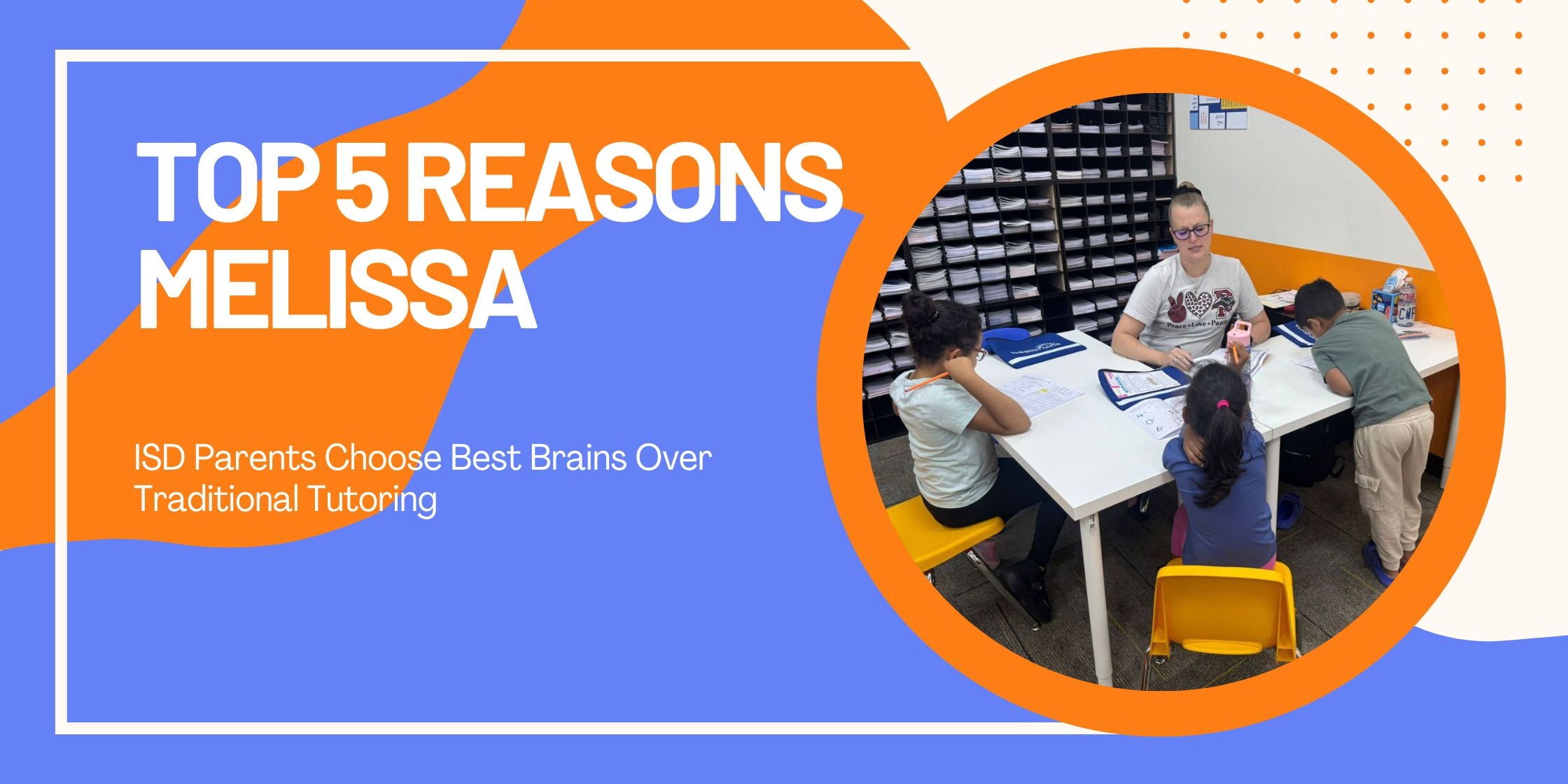Melissa
How to Prepare for the CogAT Test: Practical Strategies for Gifted Program Success
The Cognitive Abilities Test (CogAT) is one of the most widely recognized assessments used to identify students who are ready for gifted and talented programs. Unlike traditional exams that measure memorized knowledge, the CogAT evaluates how a child thinks, reasons, and solves problems. It’s not about what your child knows, it’s about how they learn and apply logic.
Because of its focus on cognitive reasoning, the CogAT can feel very different from typical school tests. Success requires not only understanding the question types but also developing mental flexibility, pattern recognition, and critical thinking. With thoughtful preparation, your child can approach the exam confidently and perform at their best.
Why the CogAT Matters
Earning a strong CogAT score can open doors to advanced learning opportunities, from accelerated coursework to specialized enrichment programs. Gifted programs often emphasize creativity, independent learning, and deep conceptual understanding—skills that prepare children for long-term academic success.
However, preparing for the CogAT is not about memorizing formulas or vocabulary lists. Instead, it’s about building reasoning skills, managing time effectively, and developing a calm, confident mindset.
In this complete guide, we’ll break down the CogAT structure, explore proven preparation strategies, and share expert tips to help your child thrive—both on test day and beyond.
What Is the CogAT Test?
The CogAT test measures how students think, reason, and solve problems, rather than just what they’ve memorized. It’s divided into three main sections:
-
Verbal Battery: Analogies, vocabulary, and sentence completion
-
Quantitative Battery: Number puzzles, sequences, and math problems
-
Nonverbal Battery: Visual patterns, shapes, and spatial reasoning tasks
Each battery provides insight into a different aspect of cognitive ability, offering a holistic view of how students learn and process information. Schools use these scores to identify students who demonstrate advanced thinking potential and could benefit from gifted education programs.
Why Is Preparation Important?
Because the CogAT emphasizes logic, reasoning, and problem-solving, preparation plays a key role in helping students understand what to expect. Children who are familiar with the question types and format can respond more confidently and efficiently under timed conditions.
Here’s why structured preparation matters:
-
It builds familiarity with CogAT-style questions and reduces anxiety.
-
It helps children recognize patterns and apply reasoning across different subjects.
-
It encourages strategic thinking and teaches when to skip or revisit difficult questions.
-
It boosts self-assurance, ensuring students walk into the test feeling prepared rather than pressured.
Ultimately, CogAT preparation is not about “teaching to the test”—it’s about cultivating skills that will benefit your child far beyond a single exam.
Top Strategies to Prepare for the CogAT
A well-rounded preparation plan focuses on consistent practice, reasoning development, and stress management. Below are practical strategies to help your child excel.
1. Understand the Test Format
Start by reviewing sample CogAT questions for each section (verbal, quantitative, nonverbal). Free questions are available online, or check for practice booklets that match your child's grade level.
2. Build Reasoning Skills Every Day
CogAT success comes from developing thinking skills, not just facts. Try these activities:
-
Play with puzzles, logic games, and building blocks
-
Ask “What comes next?” games with numbers and patterns
-
Explore analogies and riddles during everyday conversations
3. Practice With Timed Sessions
CogAT is a timed test. Have your child complete sample questions using a timer, focusing on pacing and skipping tough items, so they don’t get stuck.
4. Mix Subjects for Comprehensive Preparation
Encourage your child to work on reading, math, and spatial reasoning throughout the week. Varied practice strengthens the underlying cognitive traits the CogAT measures.
5. Review Mistakes and Learn From Them
Go over any missed questions together. Understanding why an answer was wrong helps build stronger problem-solving abilities.
6. Manage Stress and Build Confidence
Keep practice sessions short, positive, and focused on “thinking as a skill”—not just getting the winner’s score. Praise effort, not just right answers.
Helpful Resources for CogAT Preparation
A wide range of resources can help children prepare effectively:
-
Free online sample questions from educational websites
-
CogAT preparation apps and logic games that make learning interactive
-
Official practice books and workbooks from reputable publishers
-
CogAT Professional tutoring or enrichment programs specializing in gifted testing
Choose resources that match your child’s learning style. Some students enjoy hands-on games, while others thrive with structured, workbook-based practice.
CogAT Test Levels and Age Groups
The CogAT is tailored to different ages and grade levels, ensuring that students are tested in ways appropriate for their stage of development. Instead of using the same exam for everyone, the test is divided into levels.
-
Primary Levels (K–2nd grade): These rely heavily on pictures, patterns, and visual reasoning. Since young children may not have advanced reading skills, the focus is on non-verbal and picture-based problem-solving.
-
Elementary Levels (3rd–5th grade): Questions gradually become more complex, requiring stronger vocabulary and math skills.
-
Middle School and High School Levels: These levels test abstract thinking, advanced quantitative reasoning, and problem-solving at higher difficulty.
For example, a kindergartener may be asked to choose the missing shape in a pattern, while a fifth grader may be tasked with solving a more complex analogy or number series.
The age-norming system ensures that a 7-year-old’s performance is only compared with other 7-year-olds, not older students. This makes the results more accurate and fair across grade levels.
Understanding the level your child will take helps parents tailor preparation strategies. A 1st grader might benefit from puzzle games and simple analogies, while a middle schooler might need more structured practice with numerical and verbal reasoning.
What to Expect on Test Day
Preparation doesn’t stop once studying is done—the test day experience itself plays a big role in performance.
To set your child up for success:
-
Ensure a good night’s sleep before the exam.
-
Provide a nutritious breakfast to maintain energy and focus.
-
Arrive early to avoid rushing or feeling anxious.
-
Remind your child that the CogAT is simply a chance to show off their thinking skills, not something to fear.
Encourage them to do their best and enjoy the challenge. A confident mindset often makes the biggest difference on test day.
Final Thoughts: Preparing for Success
Preparing for the CogAT test doesn’t have to be stressful. With the right mix of logic games, structured practice, and emotional support, any child can approach the exam feeling ready to shine.
Remember—this test doesn’t define your child’s intelligence. It highlights how they think, reason, and learn. The most successful students are those who approach it with curiosity, persistence, and confidence.
So start early, keep practice fun, and celebrate every small victory along the way. When preparation feels natural and positive, success follows.
Frequently Asked Questions (FAQs)
1. What age should my child start preparing for the CogAT?
Ideally, preparation should begin 2–3 months before testing. Younger children benefit most from fun reasoning games and puzzles that strengthen logic naturally.
2. Is the CogAT an IQ test?
No. The CogAT measures reasoning and problem-solving skills related to learning potential, while IQ tests measure general intelligence.
3. How long is the CogAT test?
Depending on the grade level, the test usually takes between 90–120 minutes, including breaks between sections.
4. Can parents prepare their children without professional tutoring?
Absolutely. Many families successfully prepare using free online materials, logic games, and consistent home practice.
5. What’s the best way to help my child stay calm during the test?
Encourage relaxation through deep breathing, affirmations, and a positive mindset. Remind them the test is simply a tool to understand how they think—not a judgment of their worth.



